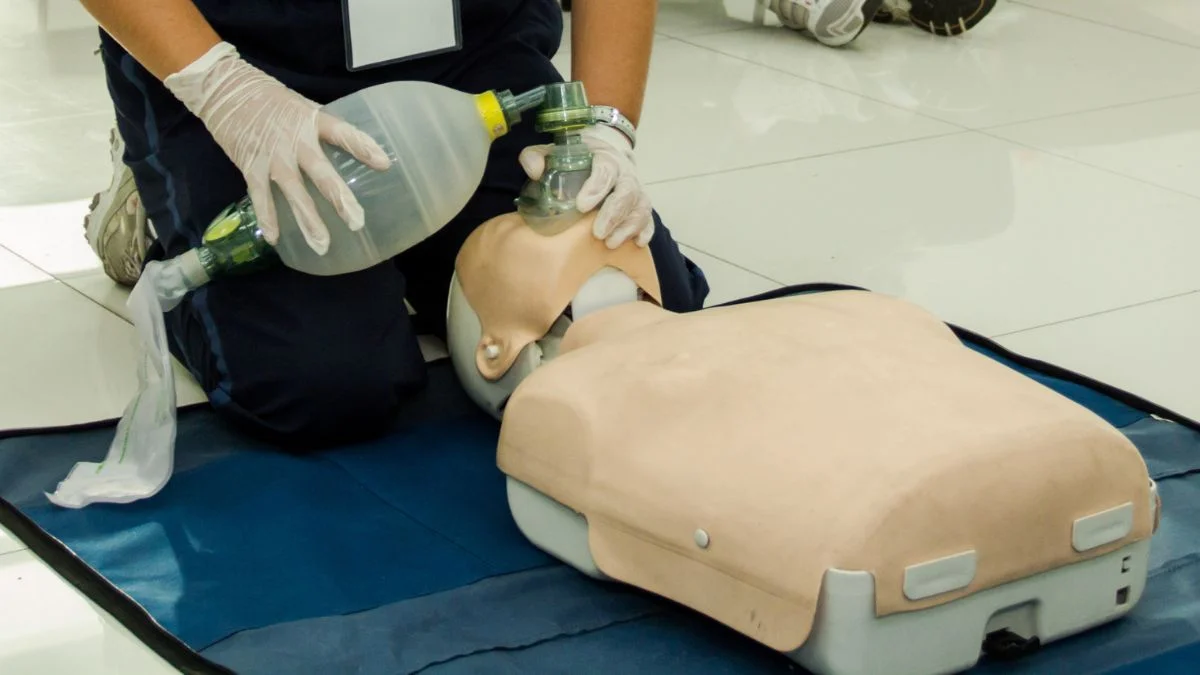Basic Life Support (BLS) is essential for many healthcare roles. A BLS course offers the life-saving skills and knowledge to handle emergencies like cardiac arrest, choking, or respiratory distress. As these situations are common in hospitals and medical facilities, many healthcare professionals, including nurses, paramedics, medical assistants, and dental hygienists, can benefit from a BLS certification. If you are a healthcare practitioner, it is essential to understand how BLS skills support your work duties.
This article explores the components of BLS training along with its benefits. It also highlights the essential steps to achieving your qualification.
Critical components of BLS training
BLS courses are available nationwide through many different training providers. You can enroll in classroom-based training or online learning. Online BLS courses offer fully independent learning on digital platforms. Meanwhile, classroom-based training is available at local hospitals and community centers. Regardless of the delivery format, both cover the same key topics. Here are the lessons included in BLS training:
| Topics | Description |
| Basics of cardiopulmonary resuscitation (CPR) and automated external defibrillators (AEDs) | CPR and AED skills are vital in cardiac arrest situations. Both techniques can increase the chances of regaining consciousness for patients who show no signs of a heartbeat. CPR involves administering chest compressions to circulate the blood to vital organs. You will then give rescue breaths to provide oxygen to the patient. AED delivers electric shocks to restore a normal heartbeat. |
| Airway management | You will learn how to maintain proper, open, and clear airways through various management methods, such as endotracheal intubation or bag-mask ventilation. This step is essential to prevent complications such as a lack of oxygen. |
| Recognition of emergencies | This section includes learning to identify symptoms like irregular breathing, lack of pulse, and unresponsiveness. Early recognition of these symptoms allows you to give urgent medical intervention, ask your team for necessary help, or call 911. |
| Team dynamics | Effective team dynamics are essential in emergencies. Through BLS training, you will learn the importance of teamwork and understanding each member’s role. |
| Choking incidents | This section trains you on choking relief methods, like back blows, chest thrusts, and the Heimlich maneuver, a life-saving technique for clearing obstructions and restoring normal breathing when someone is choking. |
Benefits of BLS training for healthcare professionals
BLS proficiency is a valuable skill and a mandatory certification for healthcare professionals. Without BLS certification, you might find yourself unprepared in emergencies. Not being ready can put patient safety at risk and affect your ability to meet industry standards. Here are some of the benefits of obtaining BLS certification:
1. Increased confidence:
BLS training boosts your confidence in emergency care responses. Knowing you have the skills to save lives allows you to remain calm when giving help. This composure can improve your performance when providing medical intervention.
2. Enhanced patient outcomes:
Prompt and appropriate medical attention can improve patient outcomes. For instance, when performing CPR on a patient experiencing cardiac arrest, your ability to start chest compressions immediately can prevent unwanted complications and increase the likelihood of a favorable outcome.
3. Professional advancement:
Many roles, particularly those involving direct patient care or emergency response, require BLS certification as proof of readiness for various emergencies. Obtaining a BLS certification increases your career prospects and qualifies you for more specialized roles.
4. Legal and ethical responsibility:
BLS training helps you fulfill your legal and ethical duties as a healthcare professional. In an emergency scenario, failure to act or inadequately manage the situation can lead to legal repercussions and ethical concerns, affecting patient outcomes and your professional reputation.
Steps to obtain and maintain BLS certification
Obtaining and maintaining BLS certification ensures you are skilled in providing critical care and meeting the standards required in the healthcare field. To earn the certification, follow the below steps:
1. Enroll in a BLS course:
The first step is to enroll in a certified and audited BLS course. Choose a course that aligns with the latest guidelines and that relevant health authorities recognize the provider.
2. Complete the training:
Once enrolled, you’ll need to complete the training, which has both theoretical and practical components. The theoretical parts cover life-saving techniques, emergency response protocols, and case studies. Practical training includes hands-on practice with manikins and AED devices.
3. Pass the assessement:
After completing the training, you must pass an assessment to prove your competence. This written test covers the theoretical section and a practical test where you must perform correct BLS techniques.
4. Obtain your certification:
Upon passing the assessment, the training provider will issue your BLS certification. This certification is valid for two years and may be issued as a card or digital certificate. You must present this certification when applying for jobs or renewing professional licenses. So, always keep your BLS card updated and accessible.
5. Maintain your BLS certification:
To maintain your BLS certification, you must renew it before it expires or within the grace period. To renew your BLS card, you must enroll in a refresher course to align your skills with the latest guidelines.
Conclusion
Preparing for emergencies is vital in healthcare settings. Equip yourself with BLS skills to gain the knowledge and confidence to save lives. Prioritizing BLS training reflects your commitment to upholding the highest medical standards. Earning a BLS certificate will add value to your resume. Look for a reputable BLS course provider and choose an online course if you want the convenience of learning in an entirely virtual, flexible, and accessible class.
For more of such helpful information, click here.









